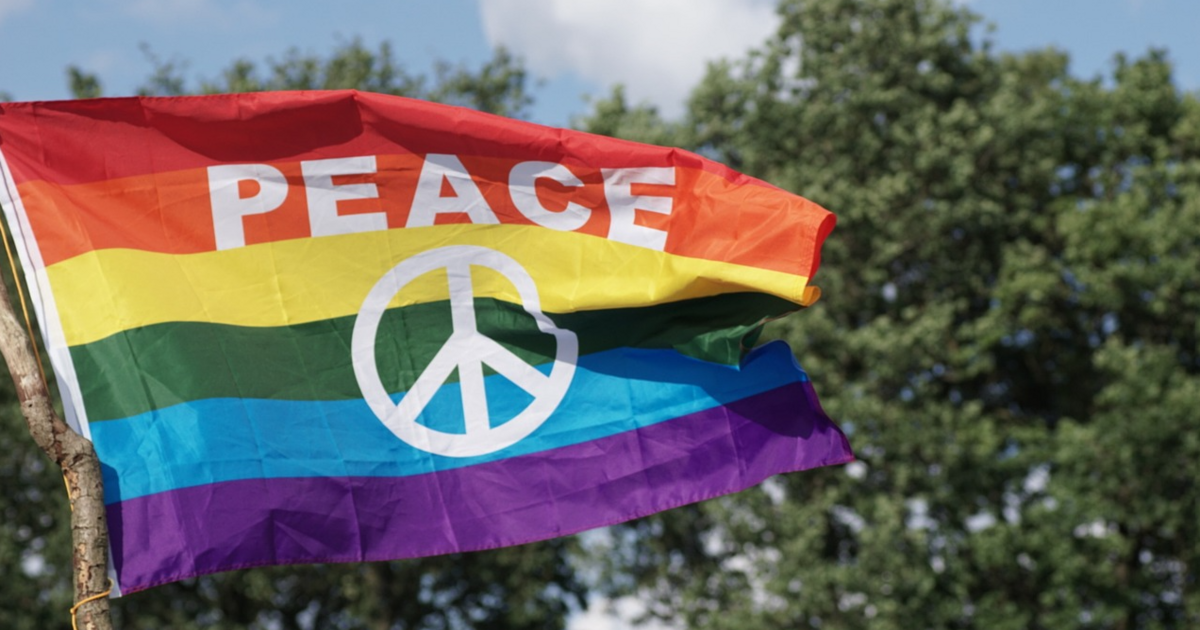
A Strategic Intervention Paper (SIP) from the Global Ideas Center
You may quote from this text, provided you mention the name of the author and reference it as a new Strategic Intervention Paper (SIP) published by the Global Ideas Center in Berlin on The Globalist.
There is little doubt that for most of my generation in the West and the East the Cultural Revolutions of the 1960s and 1970s were a crucial event. (I have to exclude the developing countries from this generalization since I do not know enough about how the Western Cultural Revolution affected ideology and the mores there).
May and June 2023 were the 55th anniversary of “les événements de mai.” There also was the recent 55th anniversary of the Warsaw Pact’s invasion of Czechoslovakia. Lest we forget, that event brought about the birth of the modern dissident movement in the USSR when eight persons unfurled a banner on the Red Square condemning that invasion.
The lasting impact of a revolution
As for myself, the revolution caught me in the formative years of high school. All events that happen at that age, even when not revolutionary, have an impact on people’s later lives. So much more if they are revolutionary.
We were lucky that the events that affected us were revolutionary mostly in the cultural sense. At the time, China also went through its Cultural Revolution — but that was an altogether different series of events: More serious, more ideological and far bloodier. But still no less significant was the Western Cultural Revolution.
What did that revolution in Western countries accomplish? It reduced the social distance between the rich and the poor, a huge achievement. It liberated sex and improved women’s social position in a way that led to the current acceptance of gender equality and all sexual preferences among the liberal elites. It also set up the pathway to equal or similar civic rights for the black population in the United States.
And it changed dramatically clothing habits, simplified them and thus added to the apparent social levelling by making it more difficult to recognize social status from one’s dress.
Similar in Eastern and Western Europe
The 1968 revolution was similar in the West and in the Communist East, but it produced very different effects. In the West, politically, it diminished class polarization and class antagonism.
I lived through the revolution in Belgium where I went to high school. There was no doubt in my mind when I arrived there that Belgium was a class-stratified society where only rich parents’ boys could date rich parents’ girls. The rules were clear.
The revolution eroded them, however incrementally. By the mid-1970s, this was no longer true. It produced a deep social change which, I think, has persisted to this day.
In Eastern Europe, where class differences were less or were obliterated by the political revolution of the late 1940s, the new revolution opened the vistas of freedom.
It hinted that a different, much freer and diverse world existed close by and that it was possible — not a Utopia. It stimulated resistance to the authorities, and the feeling of freedom — both things that were anathema to the communist regimes that valued conformism and obedience.
The long-term effects
The revolution’s effects were long-term and were seen well among the generation that came to power twenty years later.
It may seem strange to unify in the same sentence Bill Clinton and Mikhail Gorbachev, but they do illustrate well what I have in mind. Clinton was the product of breaking class barriers to advancement while Gorbachev was a product of the Ideas of 1968: Socialism with the human face. That belief affected Gorbachev in his student years as we know from Zdenĕk Mlynař’s memoirs and Gorbachev’s own “confessions.”
Marx and the revolution of 1968
One of the complicating features of the revolution was that it was leftist not only in the social ways that I described, but also because it brought from oblivion the Young Marx (whose early works, by coincidence, were first published then, more than 100 years after he wrote them), and thus the belief in democratic socialism.
The challenge to the ossified pseudo-Marxist regimes in Eastern Europe came from the left. And even better — thinking of the Young Marx — from the very founder of the political system the authorities claimed to represent. It was not a coincidence that almost all leaders of the revolution in Eastern Europe came from the Communist Youth movement: The entire Praxis group in Yugoslavia, students of Lukacs in Hungary, Jacek Kuroń, Adam Michnik, Leszek Kolakowski (coming from the hard Stalinist left) in Poland, Ota Šik and Alexander Dubček in Czechoslovakia.
Ideology and reality
The 1968 revolution was remarkably similar to the Reformation: It refreshed and re-affirmed the original ideological beliefs, and thus highlighted the gap between them and reality.
Later the leaders would, along with the rest of the society, move towards the right — either in nationalist or classical liberal directions. But that was only possible because the first opposition came from the left, and was thus ideologically more valid than had it come from the discredited right.
My point is that in 1968, Eastern European regimes were well equipped to deal with the challenges from the right. However, they were ill-equipped to deal with challenges from the left and with the seemingly apolitical challenges of long hair, loud music and bell bottom trousers.
Like the revolutions of 1848 and 1968
In the West, after breaking up some social barriers and thus establishing apparent equality, the 1968 revolution ended up, in many ways, like the revolutions of 1848. In the latter case, formal political equality was proclaimed. In the case of the Revolutions of 1968, formal social equality was proclaimed. But in both cases economic gaps became wider.
Moreover, the post-1968 economic gaps were suddenly regarded as more justifiable than before when the revolutionaries argued that they were due to class differences. Now as the revolution unfolded further, the gaps reflected differences in ability and effort — in short, in merit.
This is where the two iconic figures of the revolutionary generation and the turn to neoliberalism enter into the story: Bill Clinton and Tony Blair. It was the left that validated the traditional positions of the right, made them seem common-sensical and thus more firmly entrenched.
The left-wing attack on the regimes in the West soon morphed into the validation of the positions of the right, now even reinforced because shorn of its usual, and hard to justify, class support.
An unrevolutionary revolution
The seemingly anti-capitalist Revolution of 1968 made the world safe for capitalism. Joschka Fischer, a former street-fighting militant, eventually became foreign minister of Germany in 1998 and oversaw the first deployment of German military might since the end of the Second World War. Bob Dylan received the Medal of Freedom and Mick Jagger was knighted.
To more vividly appreciate the change, note that Jeremy Corbyn, perhaps the only significant political figure in the West who continued to hold the 1968-like beliefs, came to be seen in the 2020s as a relic from a distant past.
The political effects of the Revolution East and West were at first different, but over the long-term, almost identical. In Eastern Europe, socialism with the human face, or any kind of socialism for that matter, was gradually discarded. And in an evolution that mimicked that in the West, the end-point was declared to be what Václav Klaus called “capitalism without adjectives.”
Liberals, united with strong forces of nationalism that grew independently in the meantime and were rather unimportant in 1968, brought Communist regimes down.
(I am not denying thereby the importance of American readiness to wage war on Communism in every quarter of the globe. When I say that the regimes were brought down from within, what I have in mind is the fact that ideologically, by 1989, Communist regimes had very little to offer to their populations).
Conclusion
The 1968 revolution — with the important exception of nationalism that I mentioned — fashioned the world in which many of us lived until the Great Financial Crisis of 2008, or COVID in 2019 or the war in Ukraine in 2022 — whichever of the three possible markers dividing the eras one wishes to take. But in any case, it is plain that we live in a different ideological world today.
Takeaways
The 1968 revolution was similar in the West and in the Communist East, but it produced very different effects.
In the West, the 1968 revolution diminished class polarization and class antagonism. In Eastern Europe, where class differences were less or were obliterated by the political revolution of the late 1940s, the new revolution opened the vistas of freedom.
It may seem strange to unify in the same sentence Bill Clinton and Mikhail Gorbachev, but Clinton was the product of breaking class barriers to advancement, while Gorbachev was a product of the Ideas of 1968 -- Socialism with a human face.
The 1968 revolution was remarkably similar to the Reformation: It refreshed and re-affirmed the original ideological beliefs, and thus highlighted the gap between them and reality.
The 1968 revolution ended up, in many ways, like the revolutions of 1848. In the latter case, formal political equality was proclaimed. In the case of the revolutions of 1968, formal social equality was proclaimed. But in both cases economic gaps became wider.
The political effects of the revolution in the East and West were at first different, but over the long-term, almost identical. In Eastern Europe the human face was gradually discarded. The end-point was declared to be what Václav Klaus called “capitalism without adjectives.”
In the West, the revolution ended up in many ways like the revolutions of 1848. But in both cases economic gaps became wider.
Joschka Fischer became foreign minister of Germany and oversaw the first deployment of German military might since the end of the Second World War, Bob Dylan received the Medal of Freedom and Mick Jagger was knighted.
Jeremy Corbyn, perhaps the only significant political figure in the West who continued to hold the 1968-like beliefs, came to be seen in the 2020s as a relic from a distant past.
A Strategic Intervention Paper (SIP) from the Global Ideas Center
You may quote from this text, provided you mention the name of the author and reference it as a new Strategic Intervention Paper (SIP) published by the Global Ideas Center in Berlin on The Globalist.


